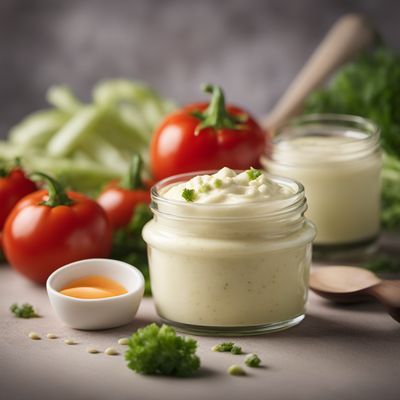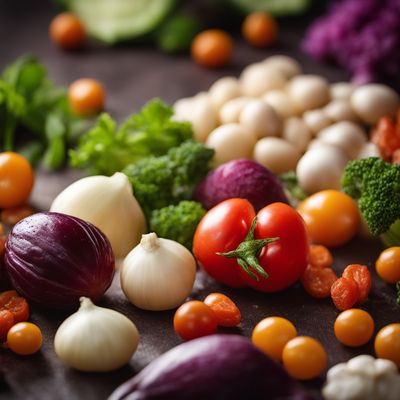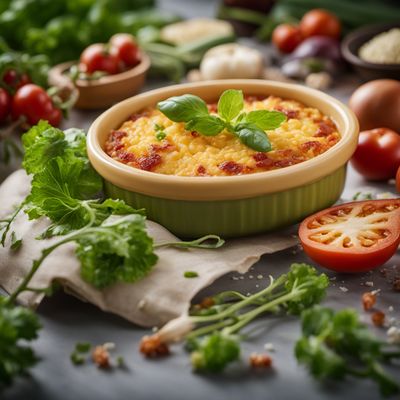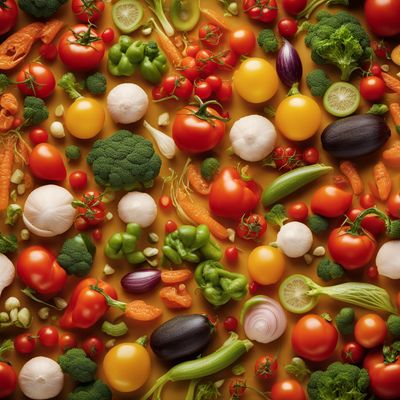
Ingredient
Ratatouille
"A Symphony of Mediterranean Flavors: Exploring the Delights of Ratatouille"
Ratatouille is a hearty and colorful vegetable dish that combines a variety of seasonal vegetables such as eggplant, zucchini, bell peppers, tomatoes, and onions. The vegetables are typically sautéed or roasted until tender, resulting in a rich and flavorful stew. Ratatouille is known for its rustic appearance, with the vegetables maintaining their distinct shapes and textures. The dish is often seasoned with aromatic herbs like thyme, rosemary, and basil, which further enhance its taste. Ratatouille can be enjoyed as a main course, a side dish, or even as a filling for sandwiches or wraps.
Origins and history
Ratatouille originated in the Provence region of France, specifically in Nice, during the 18th century. It was initially a peasant dish, created as a way to use up an abundance of summer vegetables. Over time, ratatouille gained popularity and became a staple in French cuisine. Its cultural significance lies in its representation of the Mediterranean diet and the use of fresh, seasonal ingredients.
Nutritional information
Ratatouille is a nutrient-dense dish, packed with vitamins, minerals, and dietary fiber. It is low in calories and fat, making it a healthy choice for those watching their weight. The dish is rich in antioxidants, particularly from the tomatoes and colorful vegetables, which contribute to overall well-being.
Allergens
Ratatouille is generally allergen-free, but individuals with specific allergies should be cautious of potential cross-contamination or specific ingredients used in their preparation.
How to select
When selecting vegetables for ratatouille, choose ones that are firm, vibrant in color, and free from blemishes or soft spots. Look for eggplants with shiny skin and zucchinis that are small to medium in size. Opt for ripe, juicy tomatoes and crisp bell peppers. Fresh herbs should have a strong aroma and vibrant color.
Storage recommendations
Ratatouille can be stored in an airtight container in the refrigerator for up to 3-4 days. To maintain its freshness, reheat gently on the stovetop or in the oven before serving.
How to produce
Ratatouille can be easily prepared at home by sautéing or roasting the vegetables with olive oil, garlic, and herbs until they are tender. It does not require any specialized equipment or techniques, making it accessible for amateur cooks.
Preparation tips
To enhance the flavors of ratatouille, consider salting the eggplant slices before cooking to remove any bitterness. Additionally, allowing the dish to rest for a few hours or overnight before serving allows the flavors to meld together. Ratatouille can be enjoyed warm or at room temperature, and it pairs well with crusty bread, rice, or pasta.
Substitutions
If you don't have all the ingredients for ratatouille, you can substitute some of the vegetables. For example, you can replace eggplant with mushrooms or add other vegetables like yellow squash or artichoke hearts to create a variation of the dish.
Culinary uses
Ratatouille is a versatile dish that can be enjoyed on its own as a vegetarian main course or served as a side dish alongside grilled meats or fish. It can also be used as a filling for omelets, crepes, or as a topping for pizzas and bruschetta.
Availability
Ratatouille is commonly available in France and other Mediterranean countries. It has also gained popularity worldwide and can be found in many restaurants and homes that embrace Mediterranean cuisine.
More ingredients from this category

Creamed vegetable mix
"Velvety Medley: Exploring the Creamed Vegetable Mix"

Mixed vegetables
Vibrant Medley: Exploring the Colors and Flavors of Mixed Vegetables

Vegetables, gratinated
Savory Baked Delights

Vegetable casserole
The Art of Vegetable Casseroles

Vegetable soufflé
"Garden Delight: A Fluffy Vegetable Soufflé"